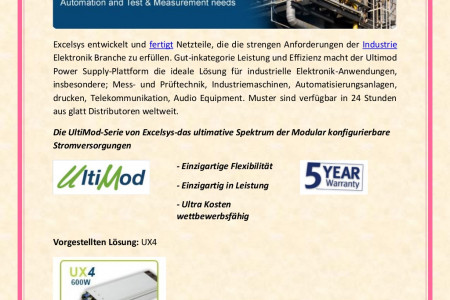
5 EASY STEPS TO CHOOSING A CONVEYOR
5 EASY STEPS TO CHOOSING A CONVEYOR STEP 1: ENVIRONMENTAL INFLUENCES E WIPE DOWN 2 WASH DOWN DRY ENVIRONMENT WET ENVIRONMENT Applications involving electricity Applications involving food Built for industrial, packing, assembly, and sortation industries Requires daily soap and water wash downs Controls contamination in pharmaceutical, medial, aerospace, and healthcare industries Belts, bearings, gear boxes etc., all need to be durable to withstand wet environment and pressure washes Ability for complete disassembly for cleaning Use Conveyors Rated for This Operation: Conveyors with the Ultraclean Products Approval Laboratory Certification do not contribute to contamination. BEST MATERIALS: Stainless Steel Plastics A STANDARD INDUSTRIAL Flexible Polyurethane Where neither a wipe down or wash down conveyor is necessary, a standard industrial conveyor is the most efficient system to choose Accommodates anything from pharmaceuticals to manual assembly STEP 2: CONFIGURATION 2 LAYOUTS Design can be turned into 3D CAD drawing to bring system to life Ability to move in various directions, accommodate other equipment, and work within workspace restrictions. Many manufacturers have sites that allow conveyor systems to be custom built CONFIGURATOR WEBSITES DESIGN TYPES Z-FRAME BACKLIT CONVEOYRS Navigates obstacles by going up and over For required visual inspection Designed with 1-2 pivot points so conveyor can adjust to go up and over an obstalcle Use light fixtures installed in different sections to illuminate items traveling on belt; light between passing product and belt allows for inspection PACING CONVEYORS METAL-FREE CONVEYORS For metal scanning When products need to be accumulated I or spread apart devices Use dual belts to properly space them on conveyor Metal free conveyors allow for metal scanning devices to be used easily to inspect products VACUUM CONVEYORS PIVOT CONVEYOR Allow lightweight products to remain in place Enables conveyor movement around employee and warehouse demands Made by perforating the belt and drawing air using a regenerative vacuum blower, through grooves in the bed of a standard conveyor Interlock switches and timers allow the conveyor to clear before gates open STEP 3: SIZE IT UP Don't buy a conveyor to process watermelons when working with peanuts When determining approximate size of conveyor needed, use specifics to match the products Build a conveyor to fit the operating space First ensure there is proper space for employee movement, then look for floor and vertical space to utilize STEP 4: MOVE IT К МОТORS Products need to move at the right speed to ensure productivity. If the motor isn't properly configured, the conveyor may move too slow or too fast. There are several types of gear motors used to prevent this from happening. Most Common Motor Mounts: MOUNT ТОР МOUNT BOTTOM MOUNT To factor the type of motor needed, the belt speed and conveyor load must be properly measured. ACCESSORIES DIVERTERS AND GATES PUSHERS Mount at side of or Control continuous overhead conveyors to move product from conveyor perpendicular to flow flow of product ADJUSTABLE LANE GUIDING 90° ADJUSTABLE TRANSFER Acts as a guide to separate product into two or more lanes on conveyor Transfers product at 90 angle from one straight conveyor to another SIDE TABLES PHOTO EYES A Provide working surface E along the frame of conveyor for employee integration O Control the conveyor of applications such as accumulation, assembly indexing, and more CONTROL STOP Safety devices that are located at strategic the conveyor for employees to quickly stop production oints along STEP 5: IT'S ALL IN THE DETAILS A CHOOSING A BELT TYPE TYPES OF BELTS STYLES OF BELTS Stainless Steel BEST FOR SANITARY APPLICATIONS FLAT Ideal for general conveying Easy to clean and strong durability. One of the most resistant belt types Plastic IDEAL FOR MORE RIGOUROUS APPLICATIONS CLEATED Good for durability, moving sharp scrap metal, and sanitary applications that subject belt to heat Good for incline and decline applications Flexible Polyurethane A GENERAL PURPOSE BELT SIDEWALLS FDA accumulation, general purpose, FDA high friction, electrically conductive applications 1 Prevents spillage easily in incline and declined applications FLEXIBLE CHAIN MODULAR Good for adapting to different applications Built for sharp turns TRANSLUCENT GRAVITY ROLLER ********** Non-mechanincal design for large part conveying Ideal for backlit conveyors DORNER The Leader in Precision Conveyors. O COPYRIGHT OF DORNER CONVEYORS 2016 MOVE FAST. MOVE SMART.
5 EASY STEPS TO CHOOSING A CONVEYOR
Source
http://www.d...veyor.aspxCategory
TechnologyGet a Quote










